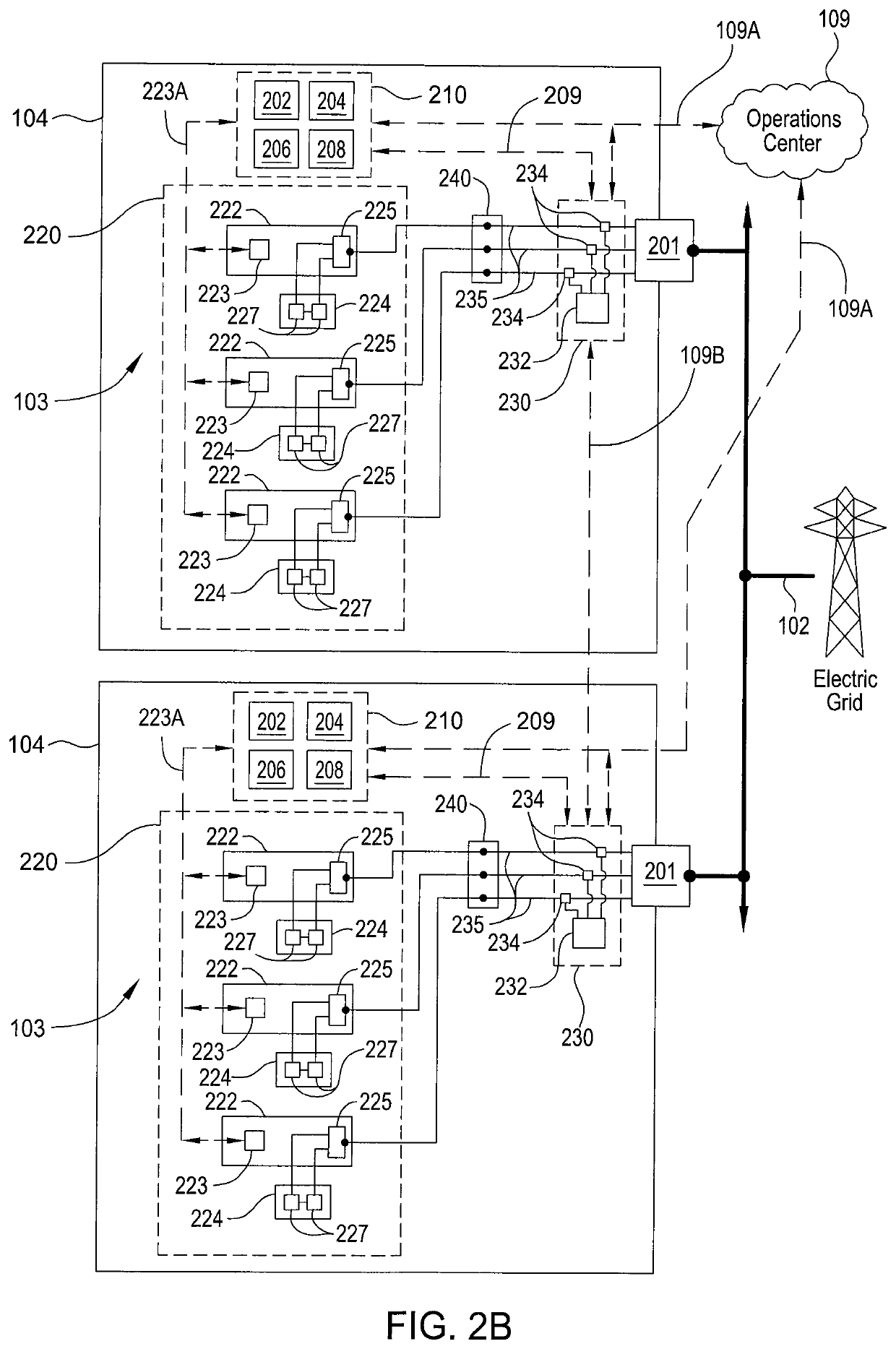System for optimizing the charging of electric vehicles using networked distributed energy storage systems
a technology of energy storage and electric vehicles, applied in the integration of power network operation systems, electrical energy, greenhouse gas reduction, etc., can solve the problems of high energy costs for users, high energy costs for energy storage mediums, and high cost of energy storage mediums, especially battery energy storag
- Summary
- Abstract
- Description
- Claims
- Application Information
AI Technical Summary
Benefits of technology
Problems solved by technology
Method used
Image
Examples
Embodiment Construction
[0045]Embodiments of the present invention include control methods employed in multiphase distributed energy storage systems that are located behind utility meters typically located at, but not limited to, medium and large commercial and industrial locations. Some embodiments of the invention use networked multiphase distributed energy storage systems located at an electric load location 104 or installed at interconnection points along the electric power distribution grid 102 to provide a means for balancing the load created from an electric charging station, which are adapted to transfer power between one or more electric vehicles and the electric power grid 102.
[0046]According to such control methods, these multiphase distributed energy storage systems operate semi-autonomously at the electric load location, but each may be in frequent contact with a cloud-based optimization engine that is configured to develop energy control solutions based on various data inputs and to communica...
PUM
 Login to View More
Login to View More Abstract
Description
Claims
Application Information
 Login to View More
Login to View More - R&D Engineer
- R&D Manager
- IP Professional
- Industry Leading Data Capabilities
- Powerful AI technology
- Patent DNA Extraction
Browse by: Latest US Patents, China's latest patents, Technical Efficacy Thesaurus, Application Domain, Technology Topic, Popular Technical Reports.
© 2024 PatSnap. All rights reserved.Legal|Privacy policy|Modern Slavery Act Transparency Statement|Sitemap|About US| Contact US: help@patsnap.com










